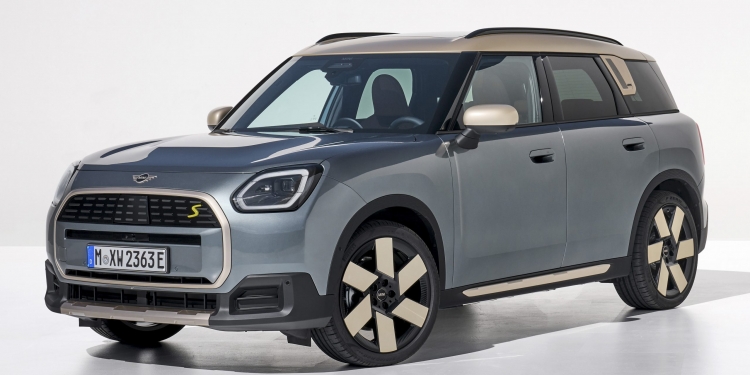After two generations, the Mini Countryman is finally getting an electric version with the advent of the third-generation model. As the new car is based on the BMW X1, the zero-emission variants are heavily derived from the iX1, sharing the same motors and battery.
Unlike its German-badged sibling, however, the Countryman is available in single-motor front-wheel-drive form. The Countryman E (Mini has ditched the Cooper branding entirely, now reserving it for the also-new hatch) produces 150kW (201hp) and 250Nm of torque, getting it from zero to 100km/h in 8.6 seconds before hitting a top speed of 170km/h.
The all-wheel-drive Countryman SE All4, on the other hand, shares its mechanicals with the iX1 xDrive30, equipped with dual motors that together churn out 230kW (308hp) and 494Nm; as yet, it’s unclear if the full power output is only unleashed as part of a boost function, as per the iX1. This allows the car to sprint from zero to 100km/h in 5.6 seconds (0.1 seconds faster than the iX1) on its way to a top whack of 180km/h.
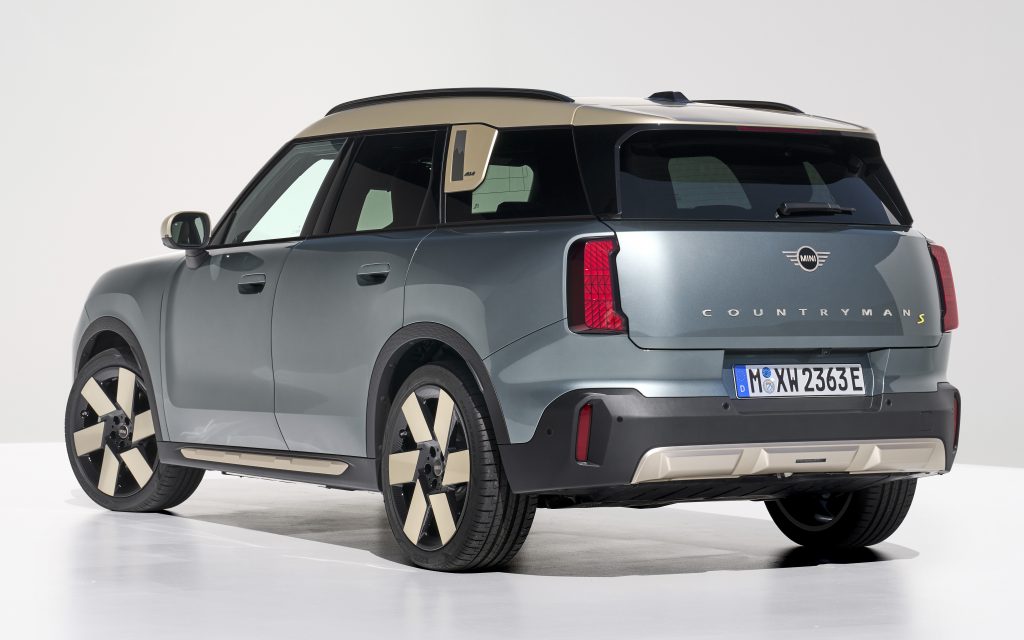
Both models share the same 66.45kWh battery that delivers a range of 462km on the Countryman E and 433km on the SE All4; the latter is 7km down on the iX1 xDrive30. They support up to 130kW of DC fast charging power, bringing the battery from 10 to 80% charge in under 30 minutes. The cars can also be charged at up to 22kW using an AC wallbox.
The Countryman was never a “mini” car to begin with, but this latest model is now properly big, growing a massive 130mm in length and 22mm in wheelbase. The size increase is instantly noticeable on the outside; the longer rear overhang means the car has completely lost the typical Mini wheel-at-each-corner stance.
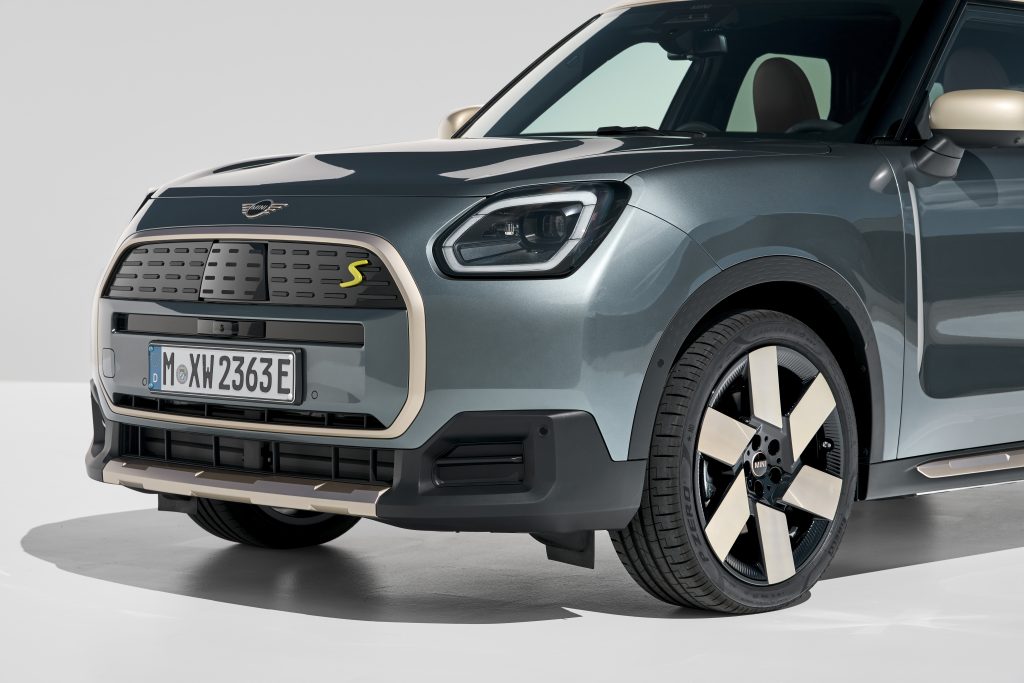
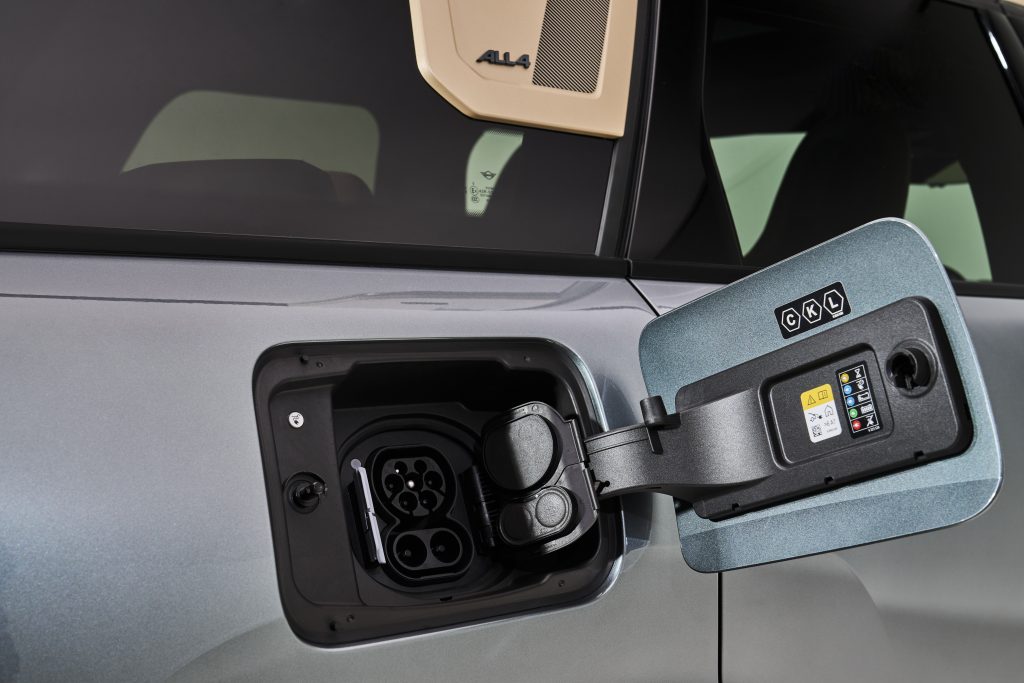
Still, like the Cooper hatch, the Countryman does wear the latest Mini “Charismatic Simplicity” design language, with cleaner surfaces, sharper lines and the elimination of elements like the clamshell bonnet and front fender “scuttles”, while the usual round headlights have been squared off. A few trademark elements remain, like the enlarged hexagonal grille, wraparound window design and contrasting floating roof.
One odd feature is the new C-pillar panel that extends downwards; this features different designs depending on the trim level. Aerodynamic features like the flush door handles help to lower the drag coefficient from 0.31 to 0.26. You can also get wheels up to 20 inches in diameter, one inch larger than before.

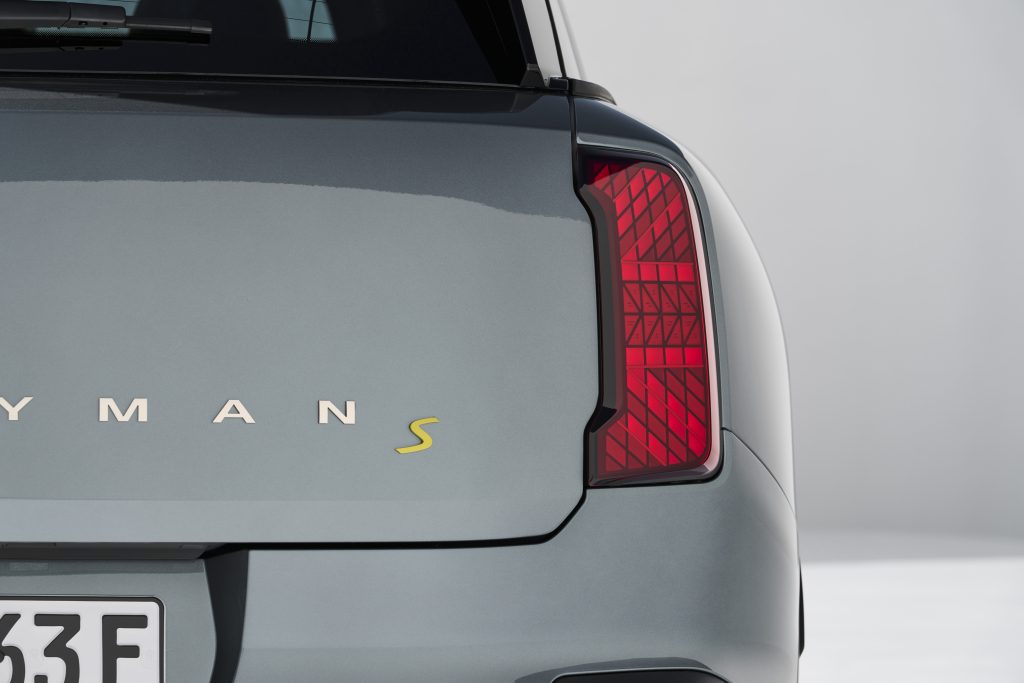
Inside, the Countryman continues the minimalist theme seen in the Countryman, with a clean dashboard, slim air vents (vertical rather than horizontal on the Cooper), lots of fabric trim (instead of the usual leather and chrome, which are now completely eliminated) and the deletion of the instrument cluster, although you can still get a head-up display as an option.
All vehicular information is instead displayed at the top of the 9.4-inch round OLED centre touchscreen, which runs on the Android-based Mini Operating System 9. This integrates the air-con controls, home screen widgets, cloud-based navigation, “Hey Mini” voice control and a row of menu and shortcut buttons at the bottom. Like on the Cooper, you can spec a projector behind this screen that casts light patterns on the dash, as well as a panoramic glass sunroof and a Harman Kardon sound system.
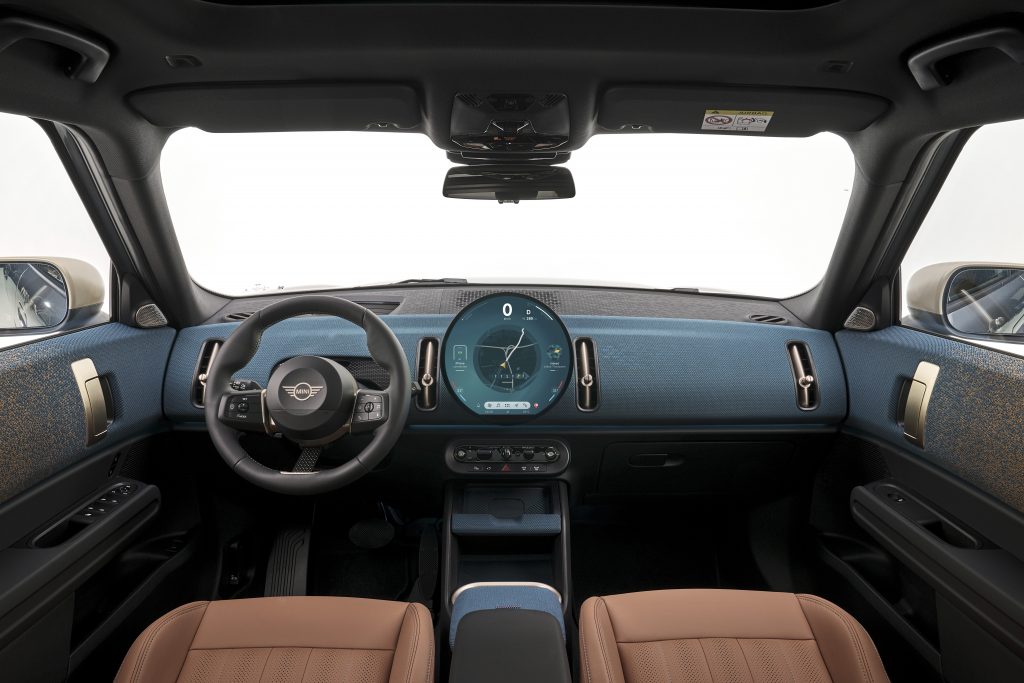
The Countryman’s increased size frees up more space for passengers, with Mini touting a significant increase in shoulder room front and rear. Taking advantage of this, the gear selector is now a small toggle switch at the bottom of the dash, freeing up space for a variety of storage spaces on the centre console.
The rear seats can also slide and recline, while the lengthened rear overhang has freed up an extra ten litres of boot space, now measuring 460 litres. Fold the 40:20:40-split rear pews and you’ll expand the luggage capacity to 1,450 litres. There’s also some underfloor storage that can be used to store the charging cables, although unfortunately there’s still no front boot.
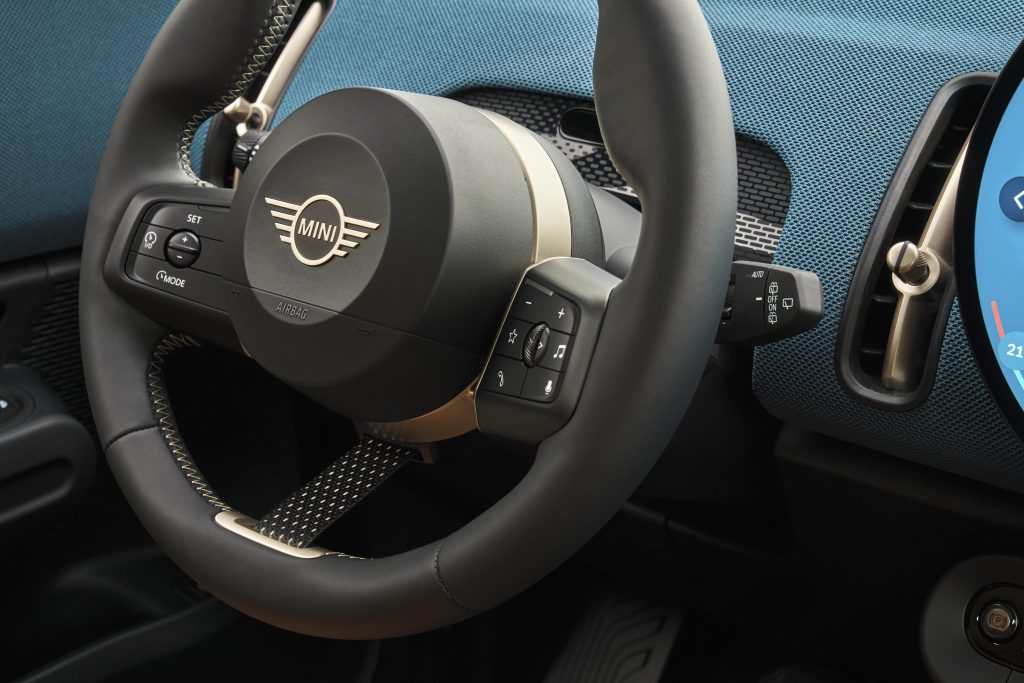
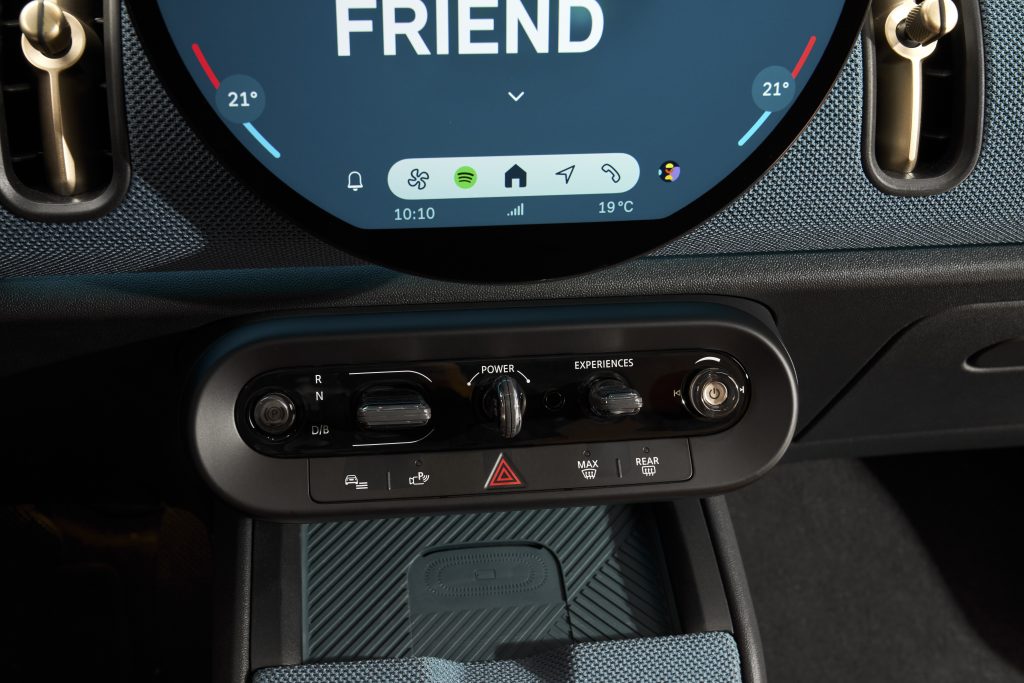
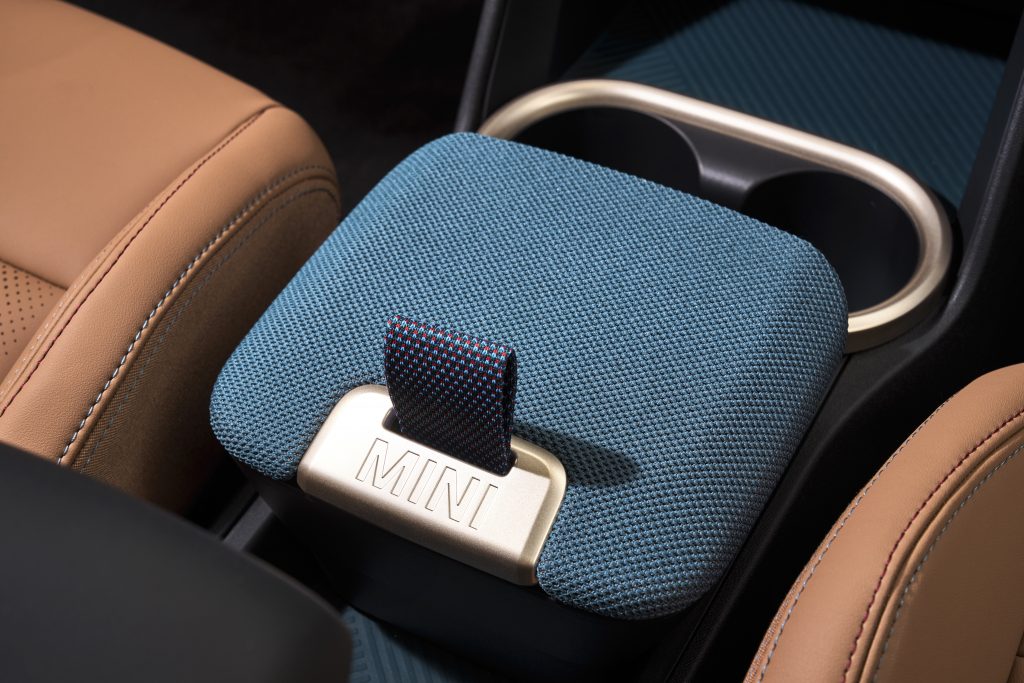
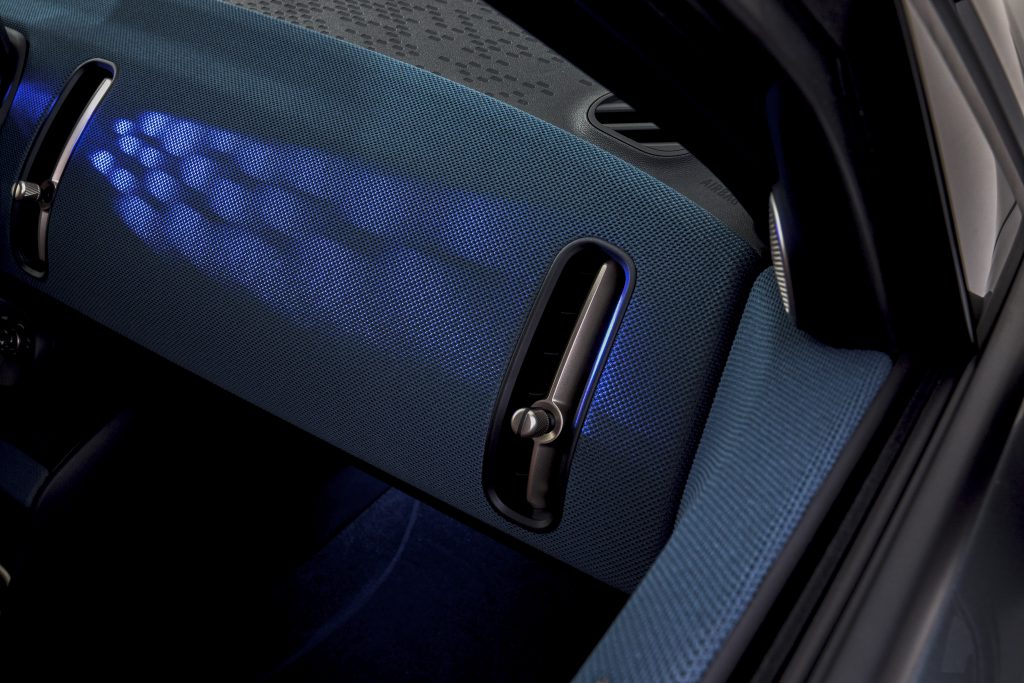
Mini has enhanced the driver assists on the Countryman, with the Driving Assistant Professional package adding the ability to make autonomous lane changes to exit a highway, similar to Tesla’s Navigate on Autopilot. You’ll also be able to drive completely hands-free on highways up to 60km/h, although this isn’t a full Level 3 semi-autonomous feature, as you’ll still need to keep your eyes on the road. An enhanced park assist and a remote parking feature is also available.
Like the Cooper, the Countryman’s springs and dampers have been tuned for sporty handling, working together with the highly preloaded anti-roll bars, quick-ratio steering, brake-by-wire braking system and wider tyre options. Also on the options list is the adaptive dampers, which also lower the ride height by 15mm.

